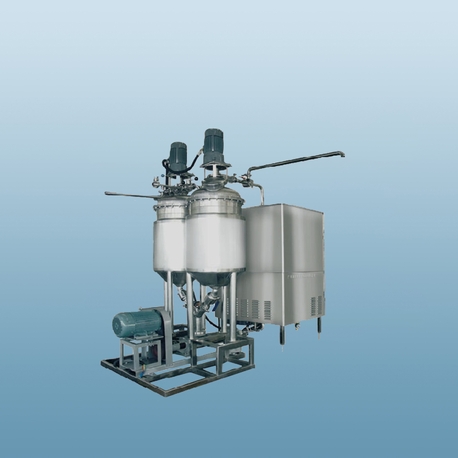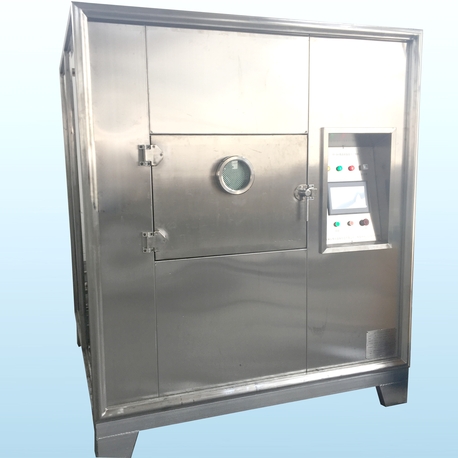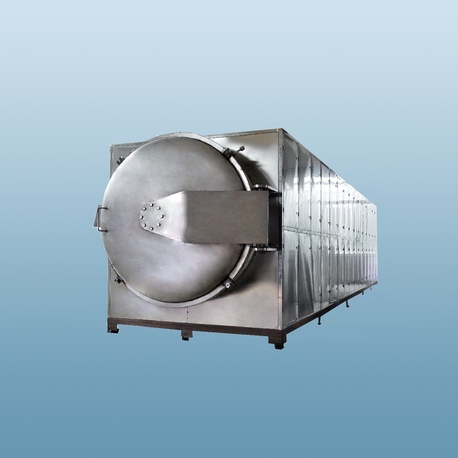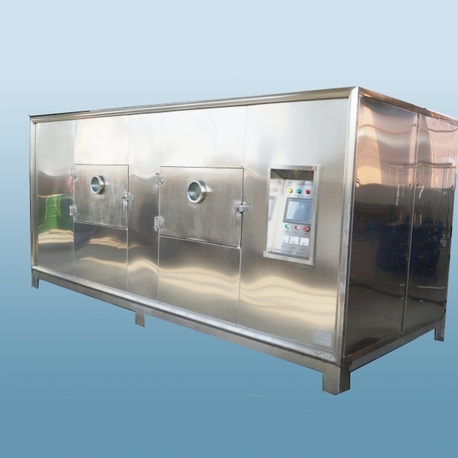In the world of industrial food production, achieving consistent, high-quality, and shelf-stable meat products is a primary goal. This is where the beef dehydrator steps in, moving far beyond the capabilities of small kitchen appliances. A commercial beef dehydrator is a precision-engineered machine designed for volume, efficiency, and strict food safety standards. For businesses looking to scale their operations, from jerky manufacturers to bulk meat processors, understanding the role of this equipment is crucial. This article delves into how a modern beef dehydrator functions, its core applications, and the solutions it provides for industry challenges. As a leader in industrial drying technology, Nasan designs systems that meet these rigorous demands head-on.

What is a Commercial Beef Dehydrator?
At its core, a commercial beef dehydrator is an industrial-scale system that removes moisture from meat through the controlled application of heat and airflow. Unlike simple hobbyist dehydrators, these units are built for continuous operation, featuring robust construction from food-grade stainless steel, sophisticated airflow designs, and precise digital controls for temperature and humidity. The fundamental purpose is to inhibit the growth of microorganisms like bacteria and mold by significantly reducing the water activity in the beef, thereby preserving it for extended periods without the need for refrigeration. This process concentrates the flavor and nutrients, creating products like beef jerky, biltong, or dried meat toppings.
Key Advantages of Using an Industrial-Grade Dehydrator
Investing in a proper commercial system offers tangible benefits that directly impact the bottom line and product quality.
Unmatched Consistency and Quality: A commercial beef dehydrator provides uniform drying across all trays or shelves. Advanced airflow technology ensures every piece of meat from the top to the bottom of the unit dries at the exact same rate, eliminating pockets of moisture that can lead to spoilage or inconsistent texture.
Enhanced Production Capacity: These machines are designed for high throughput. With large loading capacities and the ability to run 24/7, they can handle volumes that are impossible with smaller units, making them ideal for commercial meat drying operations.
Superior Food Safety and Compliance: Built with hygiene as a priority, industrial dehydrators feature easy-to-clean surfaces and components that meet stringent food safety regulations (like USDA and HACCP). Precise temperature control is critical here, as it ensures the meat passes through the "danger zone" quickly and is held at a safe pasteurization temperature throughout the cycle.
Operational Efficiency and Cost Savings: While the initial investment is higher, the long-term savings are significant. Industrial dehydrators are far more energy-efficient per pound of product dried compared to running multiple small units. They also reduce labor costs through features like automated loading and unloading systems.
The Industrial Beef Dehydration Process: A Step-by-Step Breakdown
The journey from raw meat to a perfectly dried product is a carefully managed one.
Preparation and Slicing: The beef is trimmed of fat and sliced to a consistent thickness. This uniformity is vital for even drying. It is then typically marinated or seasoned.
Loading the System: The prepared meat is arranged on trays, ensuring pieces do not overlap. In a tunnel or conveyor-style beef dehydrator, the product is automatically fed into the system.
The Dehydration Cycle: The machine is set to a specific temperature profile, often starting slightly higher to quickly surface-dry the meat and then lowering to slowly remove internal moisture without cooking it. Humidity controls actively remove moist air from the chamber.
Monitoring and Control: Throughout the multi-hour cycle, operators monitor the process via digital control panels, ensuring parameters stay within set limits. The goal is to reach a target moisture level, often verified by spot-checking with a water activity meter.
Cooling and Packaging: Once the cycle is complete, the dried beef is cooled to ambient temperature before being packaged in a low-oxygen environment to prevent oxidation and maintain freshness.
Primary Applications and Industries Served
The use of a commercial beef dehydrator extends across various sectors of the food industry.
Beef Jerky and Snack Food Manufacturing: This is the most common application. Producing millions of pounds of jerky annually requires reliable, high-capacity industrial food dehydrators.
Pet Food and Treat Production: The pet food industry relies heavily on dehydrators to create natural, single-ingredient treats and components for premium dry pet foods.
Specialty and Ethnic Foods: Products like South African Biltong or Italian Bresaola require specific drying conditions that only a controlled commercial dehydrator can provide consistently.
Food Service and Meal Preparation: Dehydrated beef is used in soup mixes, instant meals, and as a shelf-stable ingredient for restaurants and catering services.
Emergency and Survival Food Supply: Due to its long shelf life, dehydrated beef is a staple in emergency food kits and military rations.

Choosing the Right Beef Dehydrator: A Solution-Oriented Approach
Selecting the appropriate system is not one-size-fits-all. It requires a solutions-based analysis of your specific needs.
For High-Volume Jerky Producers: A continuous conveyor beef dehydrator is often the best solution. It allows for raw product to be loaded at one end and finished product to be unloaded at the other, enabling non-stop production.
For Artisan or Batch Producers: A high-quality batch-style cabinet dehydrator offers the flexibility to run different recipes and is perfectly suited for smaller-scale commercial operations that prioritize product variety.
Considering Energy Efficiency: Look for systems with heat recovery options and high-efficiency motors. A well-designed beef dehydrator from a brand like Nasan will be engineered to minimize energy consumption, a major operational cost.
The Nasan Advantage: Nasan's engineering focus on even airflow, precise control, and durable, sanitary construction provides a comprehensive industrial drying solution. Their systems are designed to tackle the core challenges of commercial meat drying, including maximizing yield and ensuring unwavering product safety.
A commercial beef dehydrator is more than just a large oven; it is a critical piece of food processing technology that enables businesses to produce safe, high-quality, and profitable dried meat products at scale. From ensuring every piece of jerky has the perfect chew to providing the drying solutions needed for a global pet food brand, this equipment is the backbone of a modern dried meat operation. By investing in a robust system from a trusted manufacturer like Nasan, businesses can achieve new levels of efficiency, consistency, and growth in a competitive marketplace. The right beef dehydrator isn't an expense; it's a strategic asset.
Frequently Asked Questions (FAQ)
Q1: What is the typical drying time in a commercial beef dehydrator?
A1: Drying time is not fixed and depends on several factors, including the thickness of the meat slices, the fat content, the initial moisture load, the specific recipe, and the temperature profile of the machine. However, for standard beef jerky, commercial cycles typically range from 4 to 8 hours, significantly faster than small consumer dehydrators due to more powerful and efficient airflow and heating systems.
Q2: How do you clean and maintain an industrial beef dehydrator?
A2: Maintenance is critical for food safety and machine longevity. Daily cleaning involves wiping down accessible surfaces and removing debris. A deep clean, which includes dismantling trays and cleaning air ducts, should be performed on a scheduled basis. Nasan dehydrators are designed with hygiene in mind, featuring smooth, stainless-steel surfaces and easy-access panels to simplify this essential process. Regular maintenance also includes checking and calibrating sensors and ensuring airflow pathways are unobstructed.
Q3: Can a beef dehydrator be used for other types of meat or food?
A3: Absolutely. While optimized for beef, a commercial food dehydrator is highly versatile. It can effectively dry poultry (like turkey jerky), game meats, fish (to make fish jerky), and even fruits, vegetables, and herbs. The key is to adjust the temperature and time settings according to the specific product's characteristics and moisture content.
Q4: What temperature range is ideal for safely dehydrating beef?
A4: For safety, the internal temperature of the beef must be raised high enough and held long enough to destroy pathogens. Most commercial processes for jerky involve drying at temperatures between 155°F and 165°F (68°C - 74°C). This ensures the meat quickly passes through the "temperature danger zone" (40°F - 140°F) and is held at a pasteurizing temperature. It is crucial to follow validated processes for time and temperature to ensure a safe product.
Q5: What is the key difference between a cheap cabinet dehydrator and a high-end model like those from Nasan?
A5: The differences are substantial. Cheap models often have poor airflow design, leading to hot/cold spots and uneven drying. They typically use less durable materials and lack precise digital controls. A high-end beef dehydrator from Nasan offers engineered, uniform airflow across all trays, robust stainless-steel construction for easy cleaning and durability, precise PID temperature and humidity control for perfect results every time, and energy-efficient components designed for continuous industrial use, ultimately protecting your product quality and your investment.








